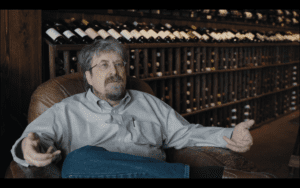Silicon Valley Bank’s annual Direct to Consumer report cites
growing visitation numbers and declining DtC volume sales
By Jeff Siegel

The news is mixed in Silicon Valley Bank’s 2024 Direct-to-Consumer Wine Survey, released during a 90-minute webcast on Tuesday, June 25. On the one hand, DtC volume is lower in most reports, but dollar value is mixed and some even reported increases. And though visitation numbers remain down since May 2022, totals have been trending higher and the report is optimistic that visits should continue to increase throughout this summer.
“The question everyone is asking: ‘Are things good or bad?’” said the report’s author, Rob McMillan, EVP and founder of the SVB Wine Division and the webcast host. “First of all, it’s not a binary question. Some are doing well and some are not doing as well. One of the problems is how we communicate this information. It’s kind of like an echo chamber.”
DTC remains crucial
The report is based on survey responses from 499 wineries across the country, with a little more than half of them from California. Joining McMillan on the webcast were Janiene Ullrich, vice president of customer service at Silver Oak Cellars; MJ Dale, founder and CEO of the Customer Vineyard consultancy; and Sonyia Grabski, general manager of Trinitas Cellars.
 The 2024 report, tracking results through the end of last year, showed many of the same trends as in other parts of the wine business, including better performances from producers selling more expensive wines and shrinking sales for those selling wines costing less than $30.
The 2024 report, tracking results through the end of last year, showed many of the same trends as in other parts of the wine business, including better performances from producers selling more expensive wines and shrinking sales for those selling wines costing less than $30.
In addition, DtC sales — whether out of the tasting room or via direct shipping — remain crucial to the financial success of most smaller wineries. The report estimates that DtC accounts for more than two-thirds of the typical small producer’s revenue.
“I’ll be honest, Q1 was one of the hardest I’ve ever seen,” said Grabski. “But now it gives us a chance to be more creative in what we’re doing.”
Tasting fees a concern
An area of special concern was the “exponential” growth in tasting room fees, said Dale, which have increased almost four-fold since 2014. Throw in more costly wine and additional costs such as the need to tip tasting room employees, and the tasting room visit has become more expensive than ever. And with that comes a possible drag on tasting room visits. As part of this, wineries that do walk-in only, as opposed to reservations or both, accounted for just 8% of respondents — down from 55% in 2018.
 “Correlation is not causation,” said Dale, “but these increasing costs are something we need to pay attention to.”
“Correlation is not causation,” said Dale, “but these increasing costs are something we need to pay attention to.”
In this, McMillan noted DtC growth may not be coming from the tasting room anymore (though the report did find that wineries selling luxury wines seemed to prefer the walk-in model). Yes, tasting room purchases increased more than 200 percent since 2012, but in 2023, seven of nine regions in the survey reported a decline in their average tasting room purchase.
More findings
Among the report’s other finings:
- Price discounting is still not common in direct sales. More often, incentives center around discounted shipping; free shipping has lost popularity among producers.
- Internet and web sales, after peaking at 16% of sales during the Pandemic, have retreated to 8%, more or less what they were in 2016.
- Wineries are lagging behind their customers in social media use. Just three-quarters use Facebook and Instagram, and the figures are barely into double digits for Twitter/X, YouTube, and the like.
- Lifetime wine club membership value, which rose almost two-thirds from 2014 to 2021, has flattened. Meanwhile, wine club churn rates remain high, with some as much as 25%, and conversion rates fall within a narrow band of 8% to 10%.
- DtC prices have increased slightly since 2017, around 2% per year, with a drop in 2020 during the Pandemic and an almost 5% increase the following year.
- In 2023, DtC case sales growth generally remained smaller than dollar growth, even in some of the regions where case sales declined. The average for the nine regions in the study was a 0.7% dollar boost and a 1.48% decline in cases sold.
- Sonoma and Virginia were the two regions with the highest reported DtC sales growth rates.
_________________________________________________________________
 Jeff Siegel
Jeff Siegel
Jeff Siegel is an award-winning wine writer, as well as the co-founder and former president of Drink Local Wine, the first locavore wine movement. He has taught wine, beer, spirits, and beverage management at El Centro College and the Cordon Bleu in Dallas. He has written seven books, including “The Wine Curmudgeon’s Guide to Cheap Wine.”




